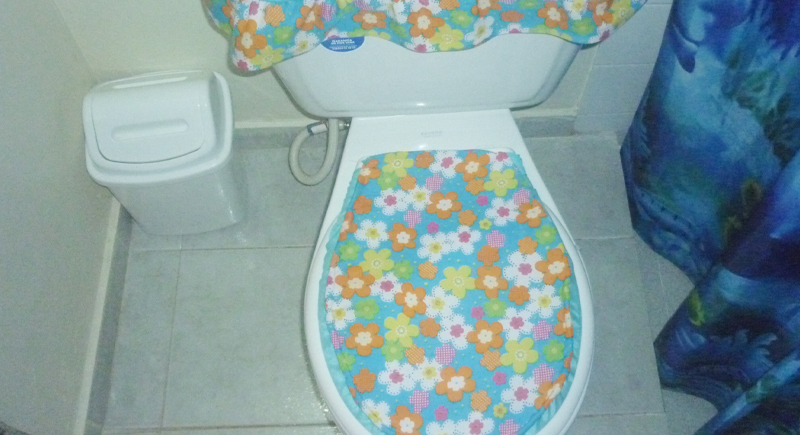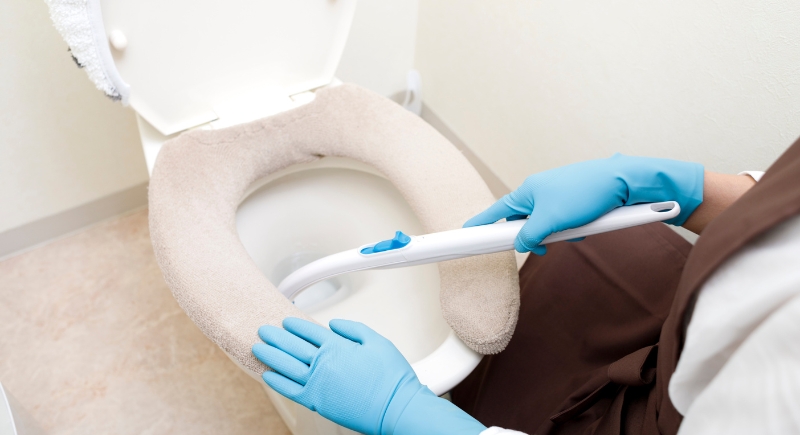The Real Reason Fuzzy Toilet Seat Covers Were in Every 1970s Bathroom
In the 1970s, the bathroom became an extension of home décor. One of the most distinctive trends of the time was the fuzzy toilet seat cover. These covers were not just a passing fad but symbols of ease, style, and the decade’s obsession with matching textiles. Brightly colored and often elaborate in design, they were everywhere. But what led to their widespread popularity?
A Reflection of 1970s Design Trends

Image via Wikimedia Commons/Guarapodecaña
The 1970s marked a period of maximalist interior design, where matching patterns and textures dominated every room of the house. People wanted everything in their homes to have a coordinated look, and bathrooms were no exception. Fuzzy toilet seat covers were chosen to match rugs, towels, and curtains, and their presence signaled the decade’s preference for bold, unified style.
Consequently, bathroom accessories like toilet seat covers, tank covers, and rugs all had to match the bold colors and prints in other areas of the house. As shag carpeting and funky wallpaper styles gained popularity, fuzzy toilet seat covers helped hype up this design philosophy into the bathroom to create a coordinated, cozy space.
The Comfort Factor
One of the main reasons fuzzy toilet seat covers became so popular in the 1970s was the relaxation they offered. Cold porcelain toilet seats were replaced with a soft, plush fabric that made the bathroom experience much more inviting. The idea behind these covers was to provide a warm surface to sit on, especially during colder months.
The fabric helped trap warmth and provide a softer, more relaxing seating experience compared to hard porcelain. They also added an extra layer of softness to ensure that bathrooms feel less sterile and more comfortable.
This was a time when ease was increasingly prioritized in interior design, and the fuzzy toilet seat cover fit perfectly into that trend.
Hygiene and Practicality

Image via iStockphoto/bee32
Though fuzzy toilet seat covers were marketed as practical, the reality didn’t always live up to the claims. The main selling point was that these covers provided a washable barrier between the user and the toilet seat, supposedly making the bathroom more hygienic. The covers were easy to clean, and many believed that regularly washing them could help maintain a more sanitary bathroom.
However, the truth was a bit messier. The fabric, especially when exposed to bathroom humidity, could trap moisture and bacteria. This created an ideal breeding ground for mold, mildew, and other bathroom gunk, despite regular washing. While the covers did offer a level of cleanliness by protecting the toilet seat, they didn’t do much to prevent the spread of germs.
They were more of a comfort accessory than a hygienic solution. As time passed, people began to realize that, while they could be washed, the covers weren’t as effective in keeping germs at bay as originally thought.
The Decline of Fuzzy Toilet Seat Covers
By the 1980s, fuzzy toilet seat covers began to fall out of favor. The once-popular maximalist décor of the ’70s gave way to a more minimalist design approach. People began moving away from overly coordinated rooms and embraced simpler and sleeker bathroom designs. The bold colors, shaggy textures, and matching sets that characterized the previous decade were replaced by clean lines and neutral tones.
On the other hand, growing concerns about bathroom hygiene and cleanliness led many to reconsider the practicality of fabric toilet seat covers. The thought of bacteria and moisture becoming trapped in the fabric was off-putting, and people started seeking out more hygienic alternatives.